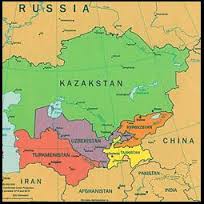(PONARS Eurasia Policy Memo) Soon after the outbreak of open conflict in Ukraine, it became fashionable to interpret the conflict as a kind of “hybrid warfare.”[1] However, the military and political dimensions of the war have expanded well beyond the concept. The Ukraine conflict has been more of a “compound” war than a “hybrid” one; the means and methods parties have employed are typical of the early post-Soviet period, combined with some new military-technical elements as well as classical Cold War-era warfare and strategies. The conflict has demonstrated the renewed significance of land-based troops and armaments for European security. It has also likely set the standard for any potential future conflicts in the post-Soviet region.
Hybrid Warfare: A New-Old Concept or Just a Slogan?
In February 2013, over a year before the Ukraine conflict, the chief of the general staff of the Russian armed forces, Valery Gerasimov, laid out a framework for “hybrid warfare” that included formally non-military measures (political, economic, and information/propaganda) and covert military action. After the outbreak of conflict in Ukraine, his analysis was interpreted as a template for Russian conduct in Crimea and subsequently in the Donbas.
But General Gerasimov did not invent the concept of hybrid war, nor is it an exclusively Russian military concept. Combat actions conducted by regular and irregular forces and involving elements of ”hybrid war” have been common in almost all armed conflicts. These elements include the engagement of private military companies, insurgency and counter-insurgency warfare, and terrorism, as well as the heavy use of information warfare and activities aimed at disrupting the economic and political order of the enemy. The simultaneous combination of conventional and irregular warfare on the same operational field is one of the main features of hybrid warfare.
The Ukraine conflict was only really a “hybrid war” in its first stage, up to the summer of 2014. Later, the scale of hostilities intensified, and the conflict transformed into an almost routine conventional operation relying on large-scale use of armored units and artillery (albeit with relatively little use of airpower). From August 2014, when Russian Army battalion tactical groups (BTG) openly clashed with the Ukrainian army near Ilovaisk, the conflict shifted from a hybrid war to what we might call a “compound war.”
Compound warfare assumes a “hybrid” combination of regular/irregular warfare, civil war, and the unconcealed involvement of a regular army. The compound nature of the conflict can be seen, for example, in the 2014-2015 winter battles for the Donetsk airport and Debaltsevo. In this fighting, the Ukrainian army was confronted by a mix of local pro-Russian irregular fighters, Russian “volunteers,” regular Russian elite and special forces fighting under the insignia of the Luhansk and Donetsk People’s Republics, and even some regular Russian heavy armor and motor-rifle BTGs.
But compound war also involves a mix of classical and modern methods of warfare, including the use of obsolete and cutting-edge arms and equipment. The Ukraine conflict was a compound war in this technical sense as well. Unmanned air vehicles (UAVs); digital command, control, communication, surveillance, and intelligence systems; and advanced compact antitank and air defense missiles were accompanied by heavy tanks and mechanized units supported by artillery and rocket systems.
A New Role for Land Forces: Lessons Learned from the Ukrainian Battlefield
The Ukraine conflict marked the first time since World War II that Europe has hosted full-scale land battles utilizing scores of tank and motorized infantry forces. It also demonstrated the potential in a European theater for a rapid and high level of military escalation without the extensive involvement of combat aviation.
The evolution of the Ukraine conflict into “compound” but mainly ground warfare convinced the United States and NATO that traditional land forces still have an important role to play in the contemporary European security architecture. American M-1 Abrams tanks that were withdrawn from Germany only in the summer of 2013 returned to the continent the following spring. Small, symbolic U.S. Army units have been “temporarily” deployed to newer NATO states in Eastern Europe: Poland, Romania, Lithuania, Estonia, and Latvia. Since this spring, paratroopers from the U.S. 173rd Airborne Brigade have been conducting exercises with the armies of these states, and the Pentagon plans to deploy more U.S. ground forces to Europe on a permanent basis. The United States has also been training Ukrainian forces and participating in joint military exercises in Georgia.
Preparing military ground forces is a key element of NATO’s newly-created Very High Readiness Joint Task Force (VJTF). The establishment of the VJTF, the joint military exercises of the 173rd airborne brigade, the demonstrative march of the U.S. 2nd Cavalry Regiment through Eastern Europe, and the prospects for a permanent deployment of additional U.S. troops in some newer NATO members correspond to a key element of the Cold War-style deterrence system known as “trip-wires.” As Samuel Charap and Jeremy Shapiro have noted, “the language of deterrence, containment and economic isolation has returned from well-earned retirement.” In this context, the forward deployment of even “symbolic” NATO or U.S. land forces in Eastern Europe can play almost the same role as Allied troops did in Berlin during the Cold War.
It is Russia, however, that has most embraced the renewed significance of land forces. Since imperial and Soviet times, land forces have played a key role in the structure of the Russian military and have been the most convincing element of Russian military and strategic power projection in its neighborhood. One vivid illustration of Russia’s continued reliance on land forces was its May 2015 Victory Day parade, when land-based vehicles and arms like the T-14 Armata tank, the T-15 and Kurganets armored vehicles, and the Koalitsiya self-propelled howitzer were on prominent display. Later that month, at a meeting with Russia’s military leadership and industry representatives, President Vladimir Putin pledged to strengthen Russia’s rearmament of its land forces. This will happen, however, at the expense of Russia’s naval budget, although the government will retain as priorities the accelerated recovery of the Black Sea Fleet and the modernization of the sea-based leg of Russia’s nuclear triad.
Another example of the growing importance Russia places on land forces is the accelerated formation of three new tank and motor rifle divisions: the 2nd Guards Tamanskaya Motor Rifle, 4th Guards Kantemirovskaya Tank, and the 10th Guards Tank divisions. The first two of these are Russia’s first new tank units since the end of the Cold War and form the basis for a new 1st Guards Tank Army. The 10th Guards division, now in the process of formation, will be deployed in Boguchar in the Voronezh region near the Ukrainian border. The plan is to link the 10th Guards to another new unit, the 20th Guards Combined Army. Both the 1st Guards Tank Army and the 20th Guards Combined Army are subordinated to Russia’s Western Military District and operationally oriented toward mainly Ukraine. They are to be the first units equipped in 2016-2017 with newly-developed armor systems like the Armata and Kurganets.
The Ukraine conflict also proved the importance of professional, light, and mobile special-purpose ground units. The growing power, accuracy, and range of small arms and light weapons enabled small units to accomplish combat tasks that would previously have been assigned to larger military units. For example, elite troops affiliated with Russia’s newly established Command of Special Operations Forces, together with Russian GRU spetsnaz, Airborne Forces (VDV), and Marines, played a decisive role in Russia’s actions in Crimea and the Donbas.
Compound Wars: A New Future for Post-Soviet Conflicts
The military lessons of the Ukraine conflict may also be projected onto other conflicts in the post-Soviet space, in particular in the nearby Caucasus. One lesson is that combat aviation may not play a decisive role given today’s effective air defense systems. The Ukraine conflict also suggested an increased role for UAVs although these will principally remain a means of support, intelligence, and surveillance rather than an independent type of military hardware. Finally, although large-caliber multiple-launch rocket systems (Smerch, Uragan) and tactical missiles (Tochka-U) were widely used by all sides, they did not prove to be determining factors for either side.
In the context of the Nagorno-Karabakh conflict, this is an eye-opening fact. The Azerbaijani leadership has kept in reserve the option of using large-caliber multiple-launch rocket systems and tactical missiles as a remote safeguard in case of any large-scale military hostilities. The battles in the Donbas demonstrated, however, that these types of long-range weapons are not “miracle weapons” that can allow for a quick and painless victory.
For now, the current situation around Nagorno-Karabakh does not resemble a “hybrid war” but rather a “low intensity conflict.” Permanent border clashes and sniper warfare continue along the line of contact. Still, the situation could change. One of the symbols of “hybrid war” in Ukraine was the engagement of regular Russian army servicemen without their own insignia (or wearing those of the DNR or LNR). A similar situation could arise in the event of open full-scale conflict. Turkish “volunteers” already took part in armed hostilities in Nagorno-Karabakh in the 1990s, and in the Azerbaijani exclave of Nakhchivan a small Turkish Army unit has allegedly been deployed for some time to conduct training and intelligence missions. Turkish special forces in Azerbaijani insignia could join large-scale Azerbaijani military units with their own heavy armor and artillery in an attempt to launch a blitzkrieg against Nagorno-Karabakh.
The lessons Georgia has drawn from its 2008 war with Russia and from the Ukraine conflict have led it to focus on modes of hybrid warfare. But it is not clear if the lessons learned from the Ukrainian conflict are totally appropriate for the Georgian scenario. Still, one result is that the Georgian military has significantly reduced its share of heavy armor and mechanized infantry units, as well as combat aviation. It has increased spending on air defenses (including the purchase of sophisticated air defense and radar systems from France in the summer of 2015), light infantry, special operations forces, and helicopter units. With this new form of territorial defense, Georgia is preparing its forces to conduct hybrid/irregular forms of combat. The Georgian military leadership has also created special defense zones across the country, allocating to each a regular Army Infantry Battle Group and three to four reservist-manned Territorial Army Regiments. However, it is not clear whether such “hybrid” preparations will strengthen Georgia’s defense capacity as any probable future conflict with Russia would likely involve mainly classical methods of warfare. During hostilities on Georgian territory in August 2008, the Russian military hardly applied any irregular or hybrid strategies. Their techniques more resembled a classic invasion, with regular land forces, armor, and artillery supported by the air force and Black Sea fleet.
In the end, the Ukraine conflict has turned out to be only the latest classical armed conflict in the post-Soviet space, combined with some hybrid and irregular elements. Future conflicts in the post-Soviet space are likely also to be “compound” in nature, combining large-scale tank warfare with more hybrid strategies, including the extensive use of electronic, information, and economic warfare.
Sergey Minasyan is Deputy Director and Head of Political Studies at the Caucasus Institute (Armenia).
[PDF]
[1] This memo elaborates on an argument initially put forth by the author in “The Last Post-Soviet War: The Military-Political Dimension of the Ukrainian Conflict,” Russia in Global Affairs, No. 4, October–December 2014.










